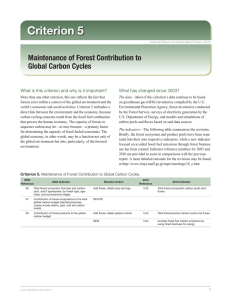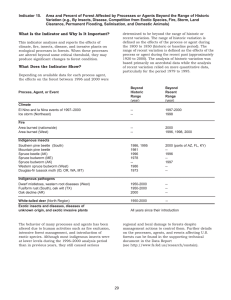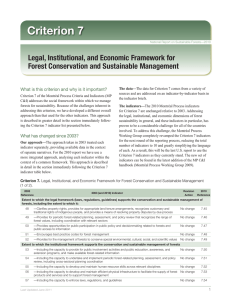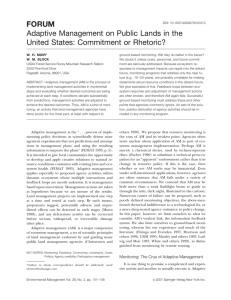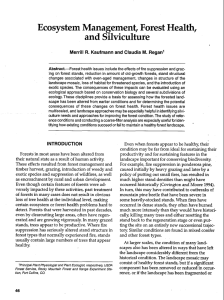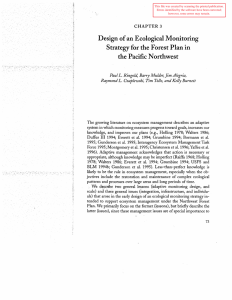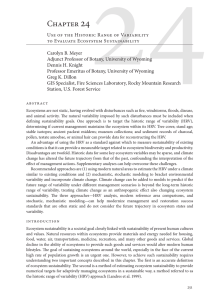Criterion 3 Maintenance of Ecosystem Health and Vitality
advertisement
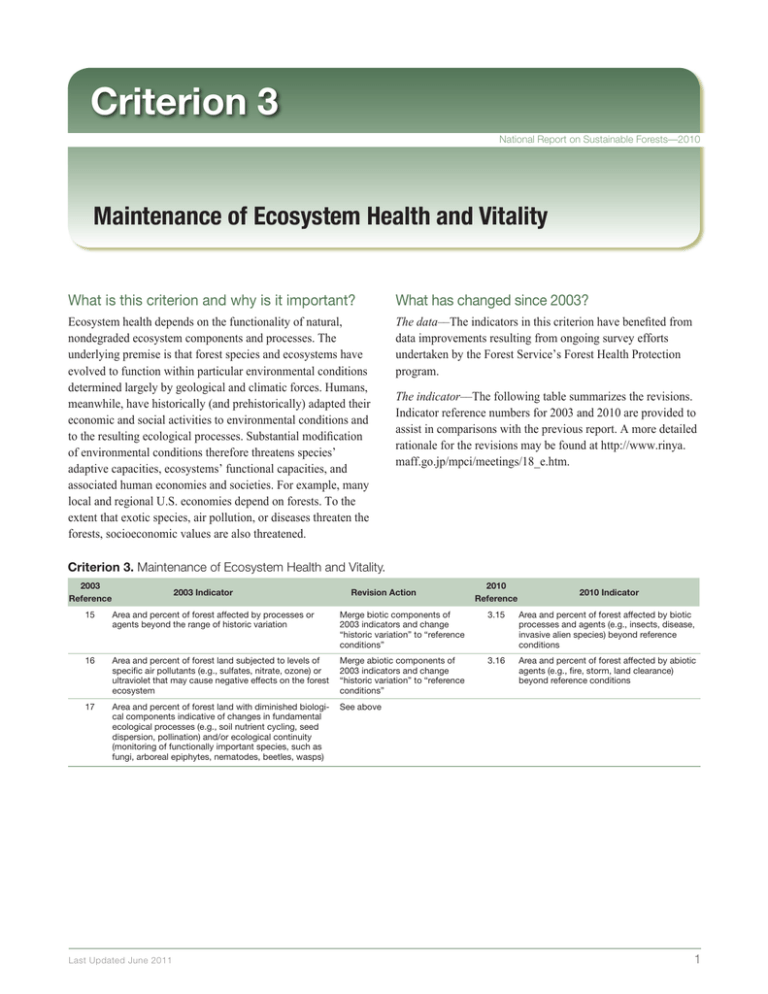
Criterion 3 National Report on Sustainable Forests—2010 Maintenance of Ecosystem Health and Vitality What is this criterion and why is it important? What has changed since 2003? Ecosystem health depends on the functionality of natural, nondegraded ecosystem components and processes. The underlying premise is that forest species and ecosystems have evolved to function within particular environmental conditions determined largely by geological and climatic forces. Humans, meanwhile, have historically (and prehistorically) adapted their economic and social activities to environmental conditions and to the resulting ecological processes. Substantial modification of environmental conditions therefore threatens species’ adaptive capacities, ecosystems’ functional capacities, and associated human economies and societies. For example, many local and regional U.S. economies depend on forests. To the extent that exotic species, air pollution, or diseases threaten the forests, socioeconomic values are also threatened. The data––The indicators in this criterion have benefited from data improvements resulting from ongoing survey efforts undertaken by the Forest Service’s Forest Health Protection program. The indicator––The following table summarizes the revisions. Indicator reference numbers for 2003 and 2010 are provided to assist in comparisons with the previous report. A more detailed rationale for the revisions may be found at http://www.rinya. maff.go.jp/mpci/meetings/18_e.htm. Criterion 3. Maintenance of Ecosystem Health and Vitality. 2003 Reference 2003 Indicator Revision Action 2010 Reference 2010 Indicator 15 Area and percent of forest affected by processes or agents beyond the range of historic variation Merge biotic components of 2003 indicators and change “historic variation” to “reference conditions” 3.15 Area and percent of forest affected by biotic processes and agents (e.g., insects, disease, invasive alien species) beyond reference conditions 16 Area and percent of forest land subjected to levels of specific air pollutants (e.g., sulfates, nitrate, ozone) or ultraviolet that may cause negative effects on the forest ecosystem Merge abiotic components of 2003 indicators and change “historic variation” to “reference conditions” 3.16 Area and percent of forest affected by abiotic agents (e.g., fire, storm, land clearance) beyond reference conditions 17 Area and percent of forest land with diminished biological components indicative of changes in fundamental ecological processes (e.g., soil nutrient cycling, seed dispersion, pollination) and/or ecological continuity (monitoring of functionally important species, such as fungi, arboreal epiphytes, nematodes, beetles, wasps) See above Last Updated June 2011 1


